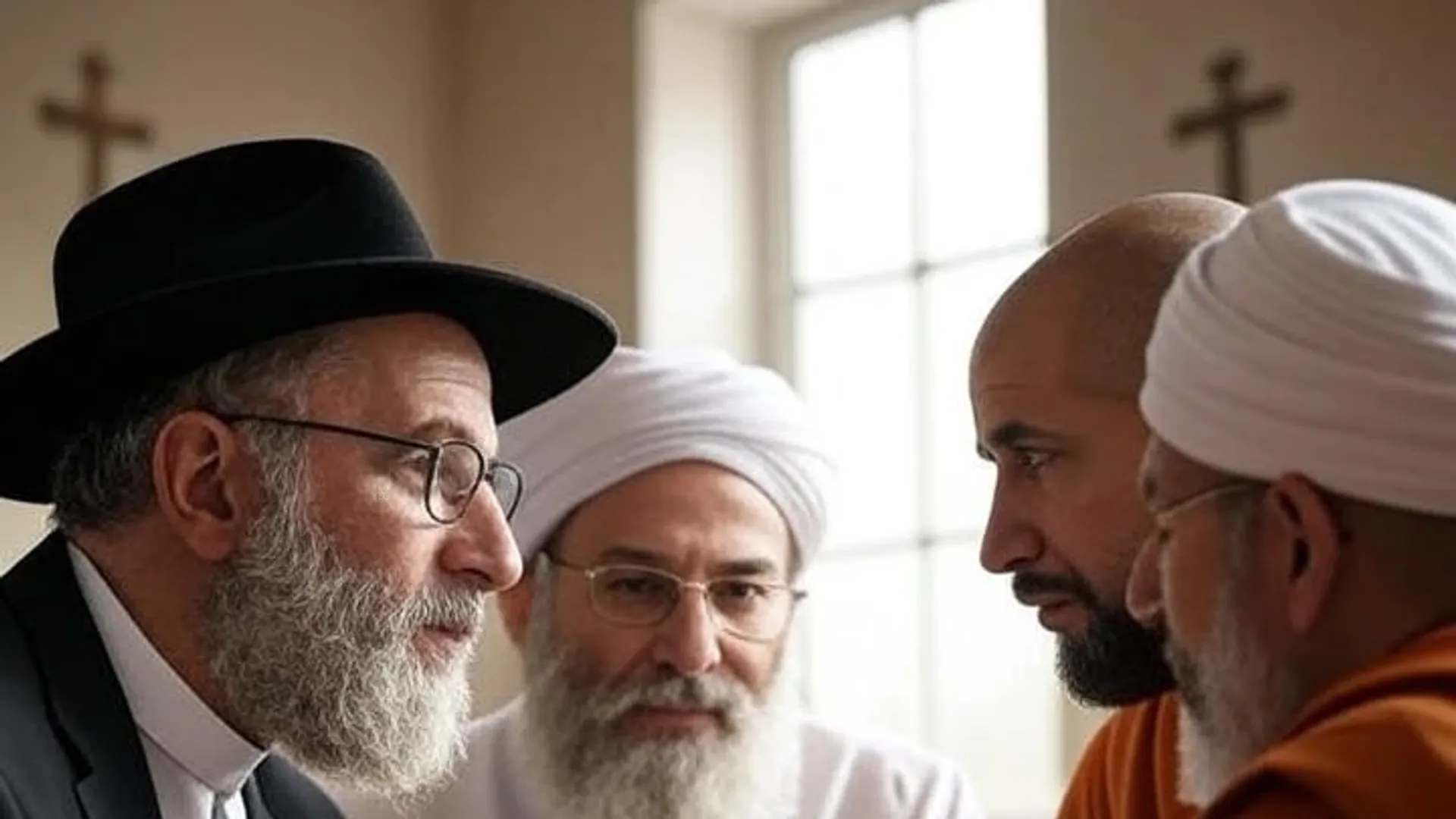Forecasting the Evolution of Religion-State Relations in the Next Century: Christianity, Judaism, and Islam in the Face of Technological Advancements
This paper provides an analytical forecast of the evolving relationship between religion and state over the next century (2025–2125), specifically focusing on Christianity, Judaism, and Islam. The forecast is based on historical trends over the past 100 years and anticipated technological developments. Each period analysed (2025–2050, 2050–2075, 2075–2100, 2100–2125) includes key technological advancements, implications for religious institutions and values, and the potential for conservative religious responses and extremism, alongside a probability estimation for each scenario's realization.

TL;DR
Religion and tech intersect, shaping future relevance.
Key Takeaways
- 1By 2050, AI may be integrated into religious education and genetic therapies.
- 2Transhumanism may spark major theological debates about human enhancement by 2075.
- 3By 2100, religions may transform into new philosophical-spiritual movements adapted to post-human contexts.
Period 1: 2025–2050 – AI and Genomic Era
Technological Forecast: Rapid advancements in artificial intelligence (AI), genetic engineering (CRISPR), quantum computing, and space exploration.
Impact on Religion: Pragmatic adaptation of religious institutions to technologies serving religious values (e.g., AI in religious education and genetic therapies). Conservative religious communities likely to cautiously integrate technology.
Probability:
Synergistic adaptation of religion and technology: 60%
Accelerated secularization due to technology: 30%
Fundamentalist backlash against technological innovation: 10%
Period 2: 2050–2075 – Transhumanism and Space Expansion
Technological Forecast: Emergence of transhumanist technologies (genetic enhancement, brain-machine interfaces), advanced AI, and permanent human settlements on the Moon and Mars.
Impact on Religion: Major theological debates about human enhancement and identity. Religious institutions potentially integrating technological developments to maintain relevance.
Probability:
Religious transformation aligning with transhumanism: 50%
Civilizational bifurcation between technologically enhanced and traditional religious communities: 20%
Post-secular unity amid technological threats: 30%
Period 3: 2075–2100 – Superintelligence and Metaphysical Discoveries
Technological Forecast: Possible achievement of technological singularity (superintelligent AI), uploading human consciousness, significant extraterrestrial discoveries.
Impact on Religion: Profound theological and philosophical challenges; religions might reinterpret doctrines significantly. Potential emergence of AI-driven religious frameworks.
Probability:
Formation of a unified global religion: 15%
Survival of religious cores despite radical changes: 40%
Emergence of technology-based theonomy: 20%
Period 4: 2100–2125 – Post-Human Era and Religious Destiny
Technological Forecast: Establishment of post-human societies, widespread synthetic life, expanded interplanetary colonization.
Impact on Religion: Either marginal symbolic existence of traditional religions or transformation into new philosophical-spiritual movements adapted to post-human contexts.
Probability:
Metaphysical religious renaissance: 25%
Near-total extinction of organized religion: 20%
Complete confluence of religion, technology, and governance: 15%
Conclusion
The coming century will witness dynamic changes in the intersection between religion, state, and technology. The adaptability of religious institutions and their relationship with technological advances will shape their ongoing relevance and societal influence.
Bibliography
Bainbridge, W. S. (2017). Dynamic Secularization: Information Technology and the Tension between Religion and Science. Springer.
Barbour, I. G. (1997). Religion and Science: Historical and Contemporary Issues. HarperCollins.
Davies, P. (1992). The Mind of God: The Scientific Basis for a Rational World. Simon & Schuster.
Fukuyama, F. (2002). Our Posthuman Future: Consequences of the Biotechnology Revolution. Farrar, Straus and Giroux.
Harari, Y. N. (2017). Homo Deus: A Brief History of Tomorrow. Harper.
Jenkins, P. (2007). God’s Continent: Christianity, Islam, and Europe’s Religious Crisis. Oxford University Press.
Kurzweil, R. (2005). The Singularity is Near: When Humans Transcend Biology. Viking Penguin.
Pew Research Center. (2020). In U.S. and UK, Globalization and Technology Influence Religion and Ethics. Pew Research.
Polkinghorne, J. (2007). Quantum Physics and Theology: An Unexpected Kinship. Yale University Press.
Scharbrodt, O. (2020). Islam and Human Enhancement: Technological and Religious Perspectives. Routledge.
Stark, R., & Bainbridge, W. S. (1987). A Theory of Religion. Rutgers University Press.
Vatican Pontifical Academy for Life. (2019). Reflections on Genetic Modification and Its Ethical Implications. Vatican Press.
About the Author
CEO | Futurist | AI Visionary | IT Transformation Leader Owner and CEO of WeRlive LTD, a leading consulting firm specializing in IT project management, CxO-level advisory, and enterprise systems integration. Certified member of the Israel Directory Union (IDU) and an experienced angel investor in emerging technologies. With decades of leadership in IT infrastructure, customer success, and business innovation, I have built a reputation for delivering complex projects with precision, agility, and human-centric excellence. Today, my passion lies at the intersection of technology, artificial intelligence, and future foresight. As a futurist and AI thought leader, I regularly publish strategic articles forecasting the future of AI, the evolution of digital society, and the profound transformations shaping industries and humanity. I help organizations anticipate what's next — by bridging present capabilities with future opportunities. My approach blends deep technical expertise, executive-level strategy, and visionary thinking to empower companies to innovate boldly, navigate change confidently, and build resilience for the decades ahead.
View Profile